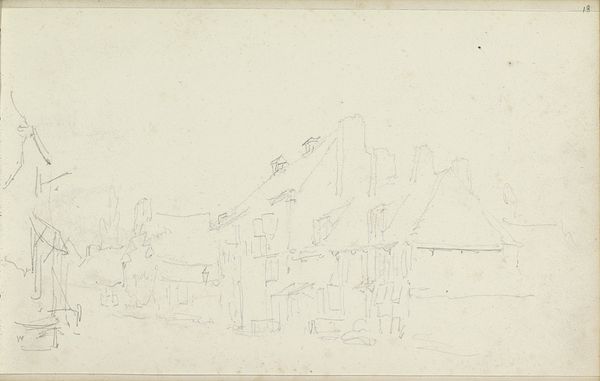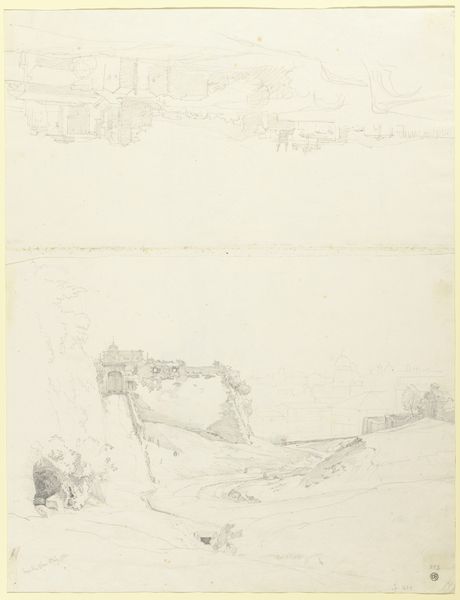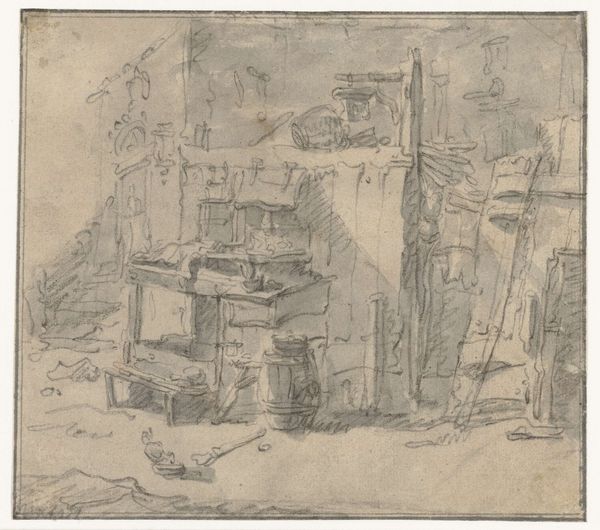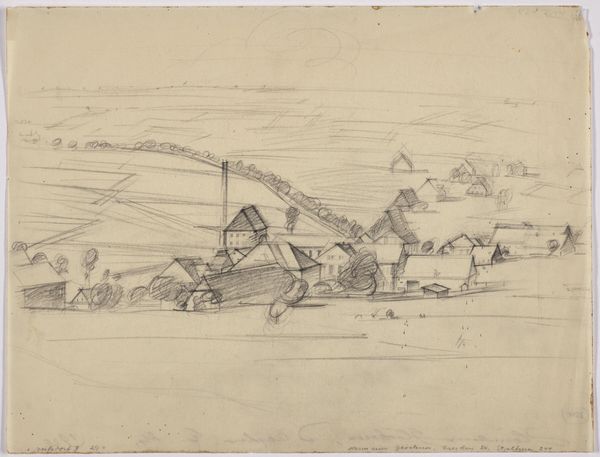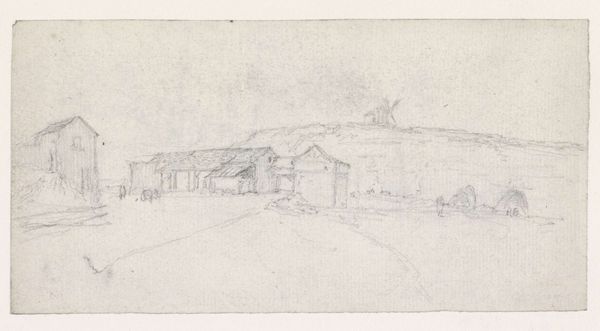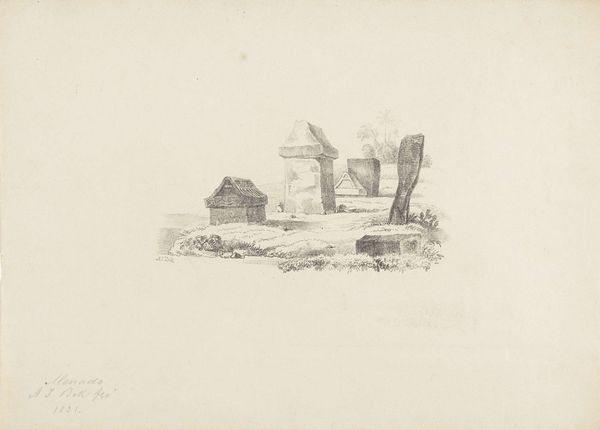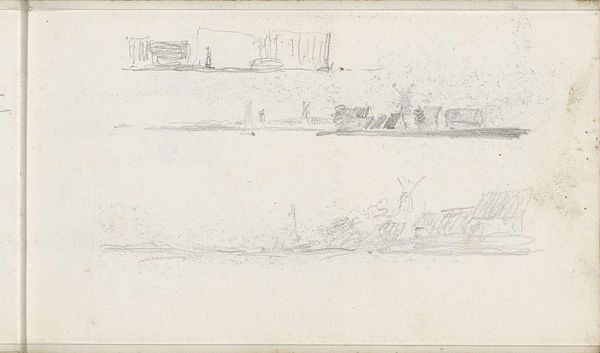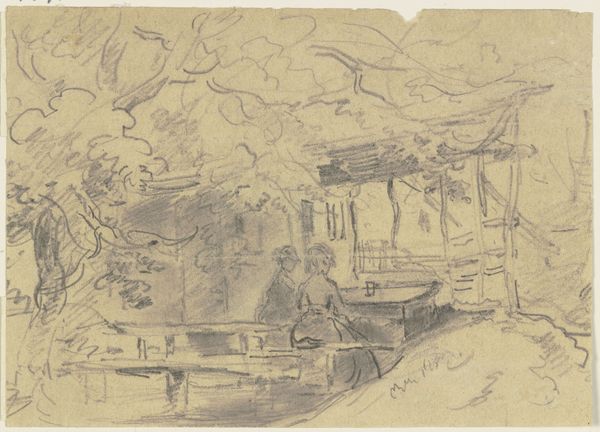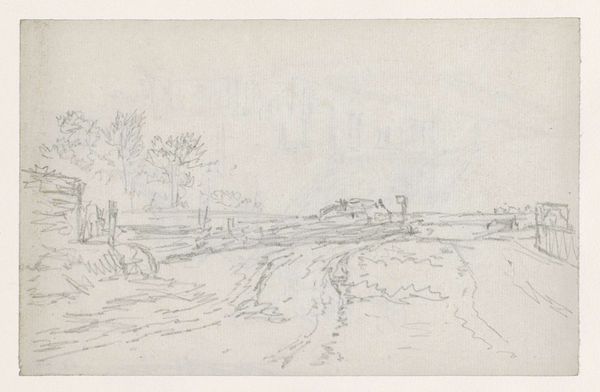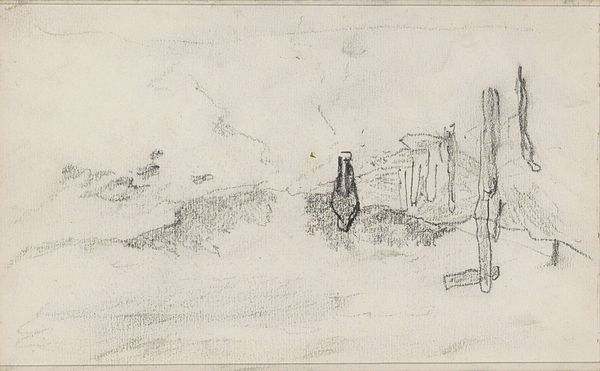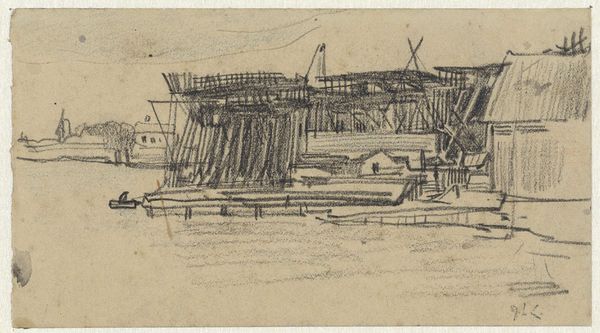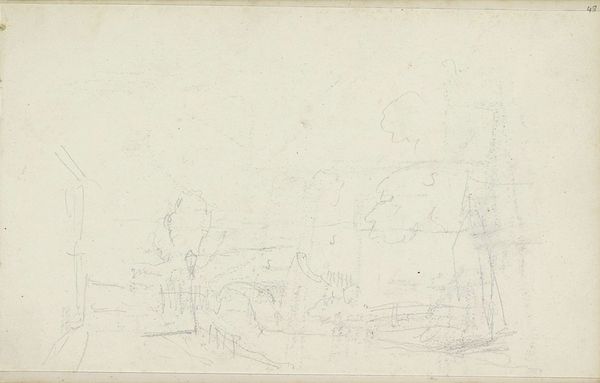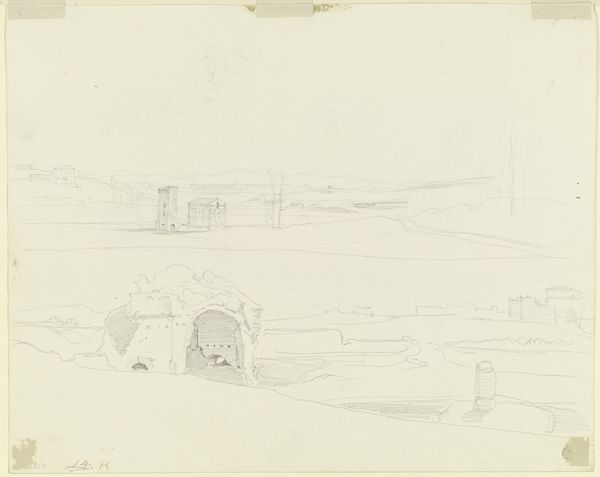
drawing, pencil
#
architectural sketch
#
drawing
#
amateur sketch
#
quirky sketch
#
dutch-golden-age
#
incomplete sketchy
#
landscape
#
personal sketchbook
#
idea generation sketch
#
sketchwork
#
pen-ink sketch
#
pencil
#
sketchbook drawing
#
realism
#
initial sketch
Dimensions: height 158 mm, width 336 mm
Copyright: Rijks Museum: Open Domain
Curator: Looking at Johan Conrad Greive's 1855 pencil drawing, "Vissershuizen te Zandvoort", now in the Rijksmuseum, it strikes me as a raw study of vernacular architecture. What are your first thoughts? Editor: Utterly charming in its simplicity! There’s an almost ghostly feel to it. The hazy, unfinished lines evoke a kind of dreamy nostalgia, like a half-remembered childhood seaside village. It’s humble, yet intensely evocative. Curator: Indeed. As a drawing, its value lies not so much in formal perfection but as a record of observation. We see Greive grappling with representing these basic dwellings, probably fishing cottages. Note the visible pencil strokes—the trace of his labor in capturing the light and form. Editor: Exactly. The visible process, that’s the art! It makes me think about the lives lived within those walls. The rough textures suggest wind and sea, the constant weathering those structures must endure. It connects the materiality of the houses to the materiality of their existence. Curator: And it emphasizes the relationship between those homes and the surrounding economy. The artist likely sketched them quickly. The image, however, embodies larger socioeconomic forces that impacted people's everyday lives: fisheries and trades of this coastal community. Editor: Absolutely! It almost feels like looking at a blueprint, but infused with feeling. The lines themselves tell a story. Some firm and deliberate, some fading almost into nothing. They create an evocative sense of fleeting time. The ephemeral and the practical blending! Curator: And think of pencil as a readily available, affordable medium. This contributes to its status as a form of documentary and makes it inherently democratic. It doesn’t elevate its subject; rather, it meets the fishing village on its own terms. Editor: Which, I think, enhances its intimate quality. We are drawn close. It’s almost as if we’ve stumbled upon his personal sketchbook, catching a glimpse into his own exploration of the scene. A treasure. Curator: A small treasure that nevertheless tells volumes. The piece's deceptive casualness really illuminates art and life’s intricate bond. Editor: Agreed. Looking closer helps find something genuinely heartfelt amidst what, at first glance, may just seem to be notes in preparation of more polished work.
Comments
No comments
Be the first to comment and join the conversation on the ultimate creative platform.
